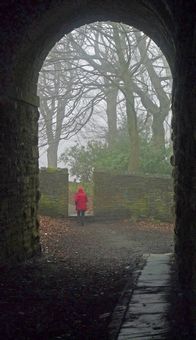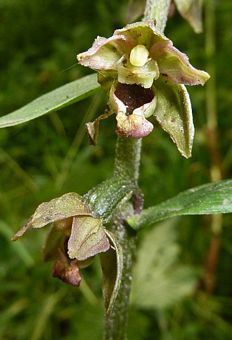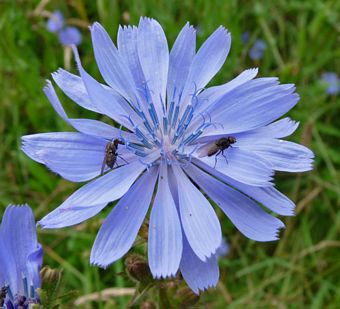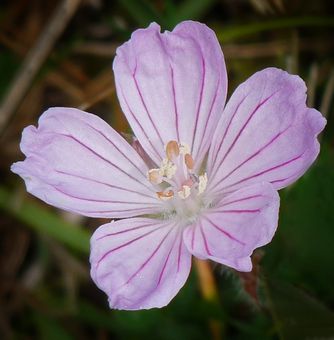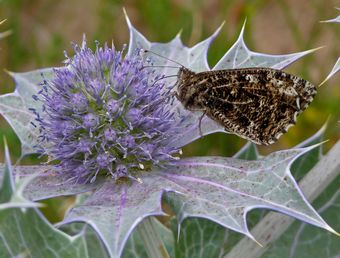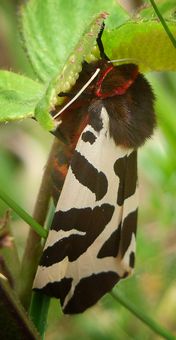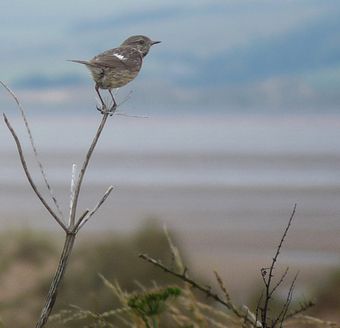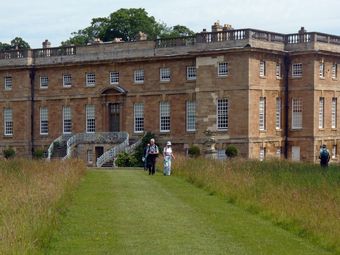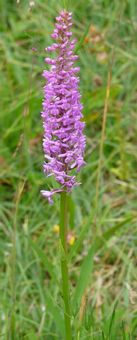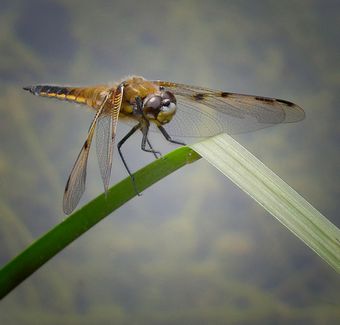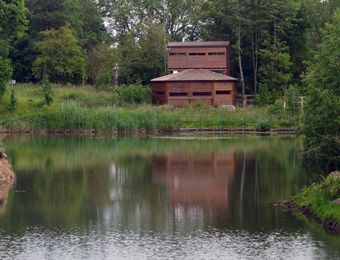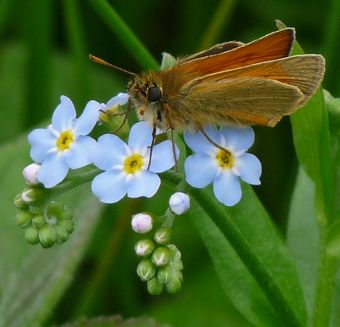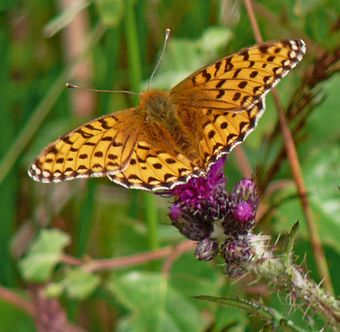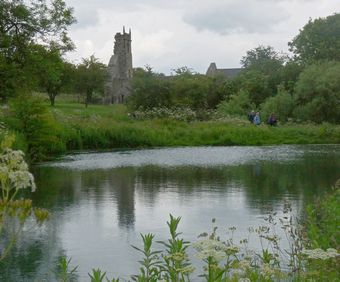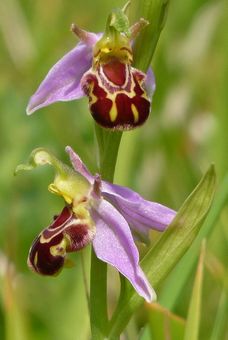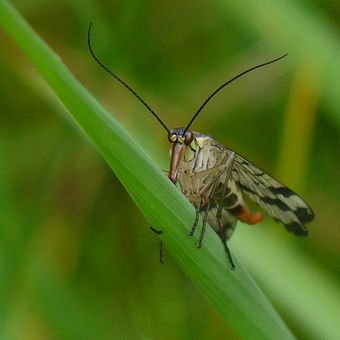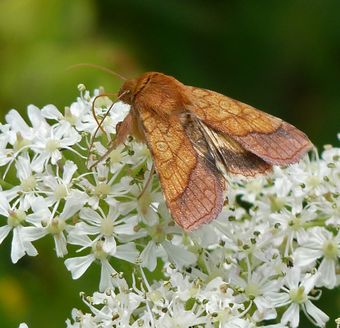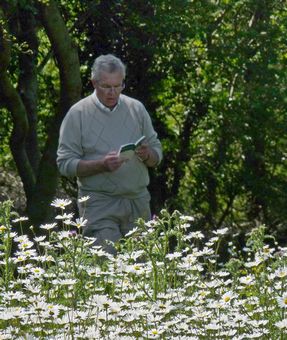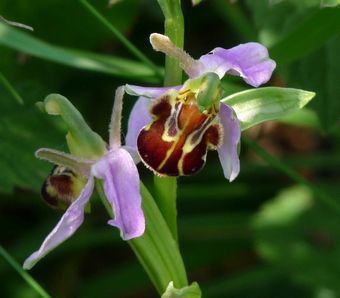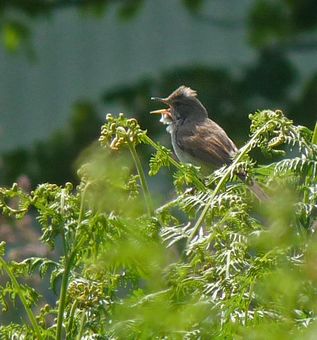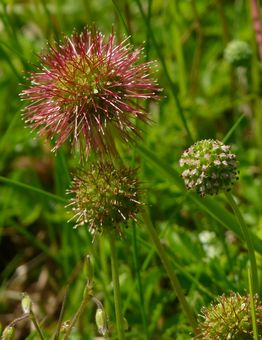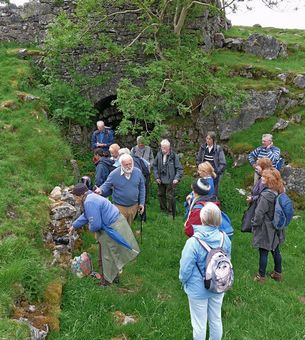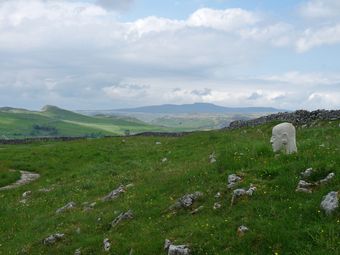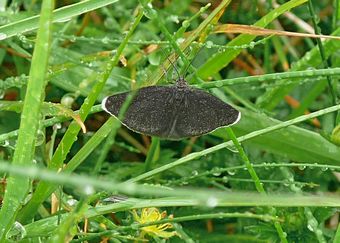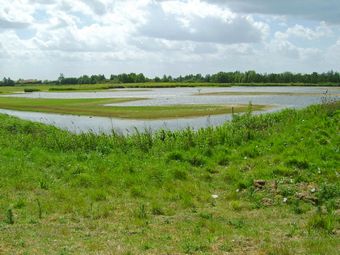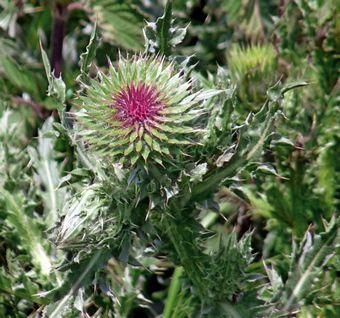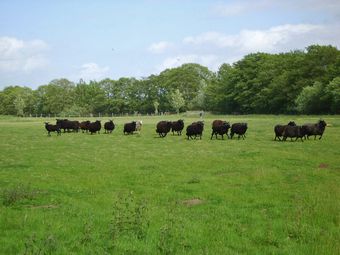WFV, Warton Crag, 26th July 2011
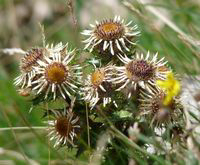 Carline Thistle
Carline Thistle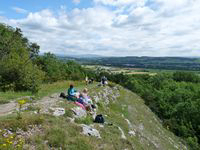 Lunch On The CragToday we returned to a favourite BEES haunt – Warton Crag. A limestone hill overlooking Morecambe Bay with 360° views to Morecambe, Blackpool, the Forest of Bowland, Ingleborough, Silverdale, Arnside Knot, the Lakes, Grange and beyond, this is a special place, so it was not surprising that the minibus was full by the time we left our final pickup point in Keighley.
It was Tuesday, so the rain which had fallen on the Bradford area during the early morning had cleared to beautiful sunshine by the time we arrived at Warton. A short 20 minute ( or 40 minutes for the botanists) climb from the bottom car park (our minibus won’t go under the barrier at the main quarry car park) was enough to persuade our ageing limbs that it was time for lunch. We ate surrounded by swathes of limestone flowers – wild thyme, rock rose, ladies’ bedstraw, eyebright, red valerian and lots more, and this is the overiding impression of Warton Crag for the botanists - just lots and lots af lovely wild flowers.
For the ornitholigists amongst us the day was disappointing. A couple of ravens floated by, swifts and swallows hawked but not in any numbers, we heard a yaffle but any significant sighting proved to be elusive.
Lunch On The CragToday we returned to a favourite BEES haunt – Warton Crag. A limestone hill overlooking Morecambe Bay with 360° views to Morecambe, Blackpool, the Forest of Bowland, Ingleborough, Silverdale, Arnside Knot, the Lakes, Grange and beyond, this is a special place, so it was not surprising that the minibus was full by the time we left our final pickup point in Keighley.
It was Tuesday, so the rain which had fallen on the Bradford area during the early morning had cleared to beautiful sunshine by the time we arrived at Warton. A short 20 minute ( or 40 minutes for the botanists) climb from the bottom car park (our minibus won’t go under the barrier at the main quarry car park) was enough to persuade our ageing limbs that it was time for lunch. We ate surrounded by swathes of limestone flowers – wild thyme, rock rose, ladies’ bedstraw, eyebright, red valerian and lots more, and this is the overiding impression of Warton Crag for the botanists - just lots and lots af lovely wild flowers.
For the ornitholigists amongst us the day was disappointing. A couple of ravens floated by, swifts and swallows hawked but not in any numbers, we heard a yaffle but any significant sighting proved to be elusive. 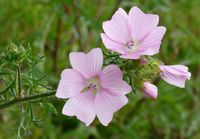 Musk Mallow However, most ornithologists tend also to be interested in anything that flies, be it planes, moths or butterfiles and so attention was focused on the latter two. Micro moths are difficult to photograph but there were lots on the wing John managed a couple of lovely shots (see Gallery). We did identify 14 butterflies including grayling and a few large fritilleries too flighty to name. The flower count is still going on as we go to press, but the highlights of the day were perhaps ploughmans’ spikenard and pale toadflax.
Four and a half hours passed in no time and before we knew it was time to clamber aboard the minibus once again and head southwards after another lovely BEES venture.
Musk Mallow However, most ornithologists tend also to be interested in anything that flies, be it planes, moths or butterfiles and so attention was focused on the latter two. Micro moths are difficult to photograph but there were lots on the wing John managed a couple of lovely shots (see Gallery). We did identify 14 butterflies including grayling and a few large fritilleries too flighty to name. The flower count is still going on as we go to press, but the highlights of the day were perhaps ploughmans’ spikenard and pale toadflax.
Four and a half hours passed in no time and before we knew it was time to clamber aboard the minibus once again and head southwards after another lovely BEES venture.Stuart

